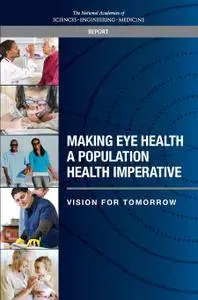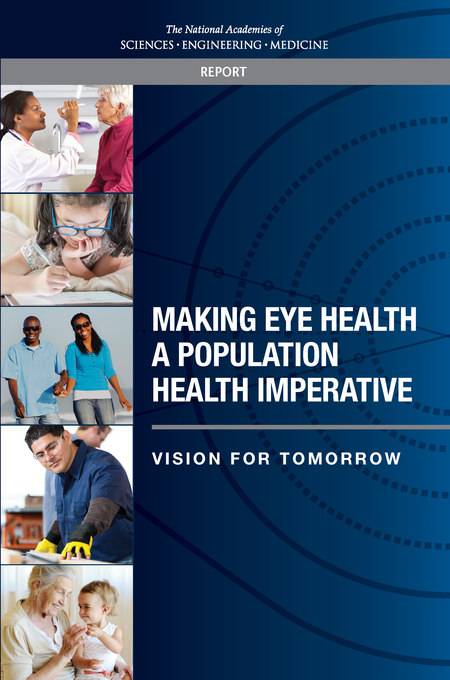Making Eye Health a Population Health Imperative: Vision for Tomorrow
Engineering, and Medicine National Academies of Sciences, Health and Medicine Division, Board on Population Health and Public Health Practice, Committee on Public Health Approaches to Reduce Vision Impairment and Promote Eye Health
Language: English | 2017 | ISBN: 0309439981 | 586 pages | PDF | 7,7 MB
Engineering, and Medicine National Academies of Sciences, Health and Medicine Division, Board on Population Health and Public Health Practice, Committee on Public Health Approaches to Reduce Vision Impairment and Promote Eye Health
Language: English | 2017 | ISBN: 0309439981 | 586 pages | PDF | 7,7 MB
The ability to see deeply affects how human beings perceive and interpret the world around them. For most people, eyesight is part of everyday communication, social activities, educational and professional pursuits, the care of others, and the maintenance of personal health, independence, and mobility. Functioning eyes and vision system can reduce an adult’s risk of chronic health conditions, death, falls and injuries, social isolation, depression, and other psychological problems. In children, properly maintained eye and vision health contributes to a child’s social development, academic achievement, and better health across the lifespan.
The public generally recognizes its reliance on sight and fears its loss, but emphasis on eye and vision health, in general, has not been integrated into daily life to the same extent as other health promotion activities, such as teeth brushing; hand washing; physical and mental exercise; and various injury prevention behaviors. A larger population health approach is needed to engage a wide range of stakeholders in coordinated efforts that can sustain the scope of behavior change. The shaping of socioeconomic environments can eventually lead to new social norms that promote eye and vision health.
Making Eye Health a Population Health Imperative: Vision for Tomorrow proposes a new population-centered framework to guide action and coordination among various, and sometimes competing, stakeholders in pursuit of improved eye and vision health and health equity in the United States. Building on the momentum of previous public health efforts, this report also introduces a model for action that highlights different levels of prevention activities across a range of stakeholders and provides specific examples of how population health strategies can be translated into cohesive areas for action at federal, state, and local levels.



